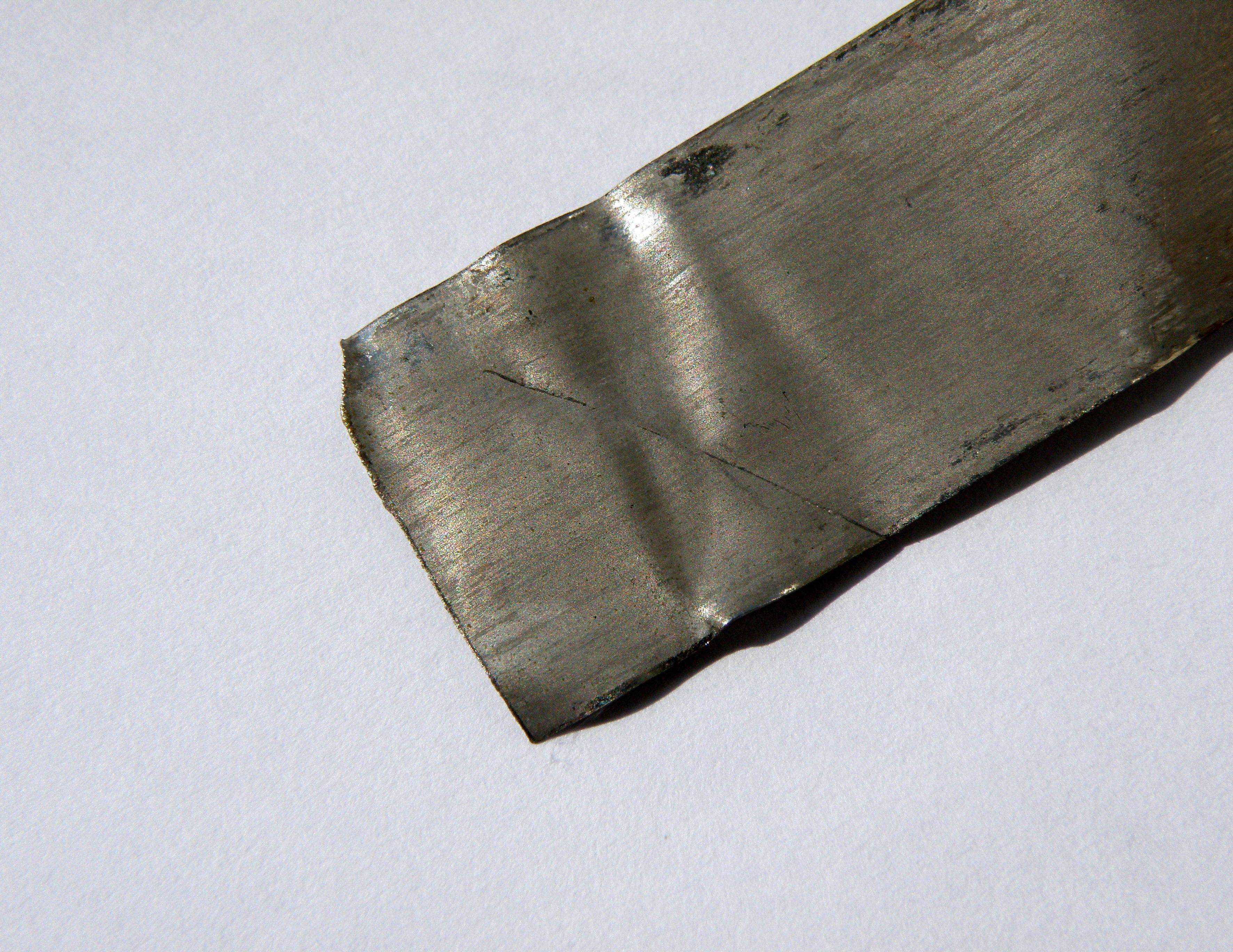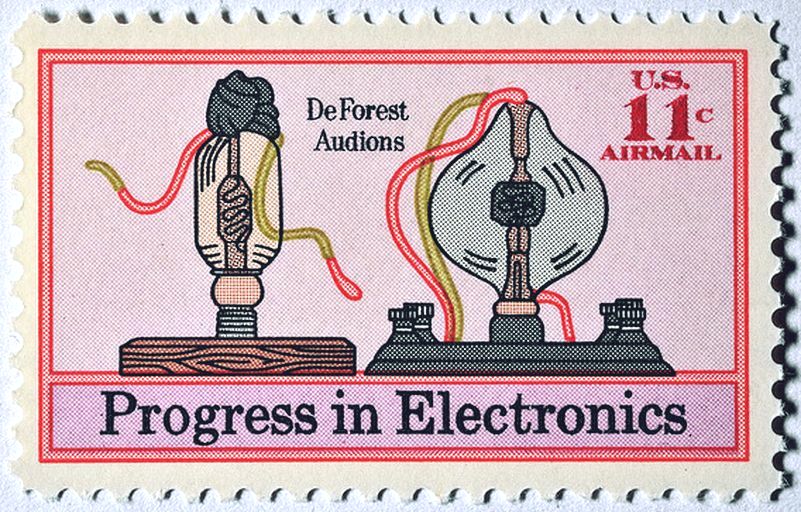|
Elliott Cresson Medal
The Elliott Cresson Medal, also known as the Elliott Cresson Gold Medal, was the highest award given by the Franklin Institute. The award was established by Elliott Cresson, life member of the Franklin Institute, with $1,000 granted in 1848. The endowed award was to be "for a discovery in the Arts and Sciences, or for the invention or improvement of some useful machine, or for a new process or combination of materials in manufactures, or for ingenuity skill or perfection in workmanship." The medal was first awarded in 1875, 21 years after Cresson's death. The Franklin Institute continued awarding the medal on an occasional basis until 1998 when they reorganized their endowed awards under one umbrella, The Benjamin Franklin Awards. List of recipients A total of 268 Elliott Cresson Medals were given out during the award's lifetime. See also * List of engineering awards * List of physics awards References {{DEFAULTSORT:Cresson Medal Science and technology awards Frank ... [...More Info...] [...Related Items...] OR: [Wikipedia] [Google] [Baidu] |
Emile Berliner
Emile Berliner (May 20, 1851 – August 3, 1929) originally Emil Berliner, was a German-American inventor. He is best known for inventing the lateral-cut flat disc gramophone record, record (called a "gramophone record" in British and American English) used with a gramophone. He founded the Berliner Gramophone, United States Gramophone Company in 1894;Library of Congress"Emile Berliner and the Birth of the Recording Industry: The Gramophone" Retrieved 2017-01-19. The Gramophone Company in London, England, in 1897; Deutsche Grammophon in Hanover, Germany, in 1898; and Berliner Gramophone#Berliner Gram-o-phone Company of Canada, Berliner Gram-o-phone Company of Canada in Montreal in 1899 (chartered in 1904). Berliner also invented what was probably the first radial aircraft engine (1908), a helicopter (1919), and acoustical tiles (1920s). Early life Berliner was born in Hanover, Germany, in 1851 into a Jewish merchant family. He completed an apprenticeship to become a merchant, as ... [...More Info...] [...Related Items...] OR: [Wikipedia] [Google] [Baidu] |
Radium
Radium is a chemical element; it has chemical symbol, symbol Ra and atomic number 88. It is the sixth element in alkaline earth metal, group 2 of the periodic table, also known as the alkaline earth metals. Pure radium is silvery-white, but it readily reacts with nitrogen (rather than oxygen) upon exposure to air, forming a black surface layer of radium nitride (Ra3N2). All isotopes of radium are radioactive, the most stable isotope being radium-226 with a half-life of 1,600 years. When radium decays, it emits ionizing radiation as a by-product, which can excite fluorescent chemicals and cause radioluminescence. For this property, it was widely used in Self-luminous paint, self-luminous paints following its discovery. Of the Radionuclide, radioactive elements that occur in quantity, radium is considered particularly Toxicity, toxic, and it is Carcinogen, carcinogenic due to the radioactivity of both it and its immediate decay product radon as well as its tendency to B ... [...More Info...] [...Related Items...] OR: [Wikipedia] [Google] [Baidu] |
Wright R-790
The Wright R-790 Whirlwind was a series of nine-cylinder air-cooled radial aircraft engines built by Wright Aeronautical Corporation, with a total displacement of about and around . These engines were the earliest members of the Wright Whirlwind engine family. Design and development The R-790 Whirlwind began as the Lawrance J-1, a nine-cylinder air-cooled radial developed in 1921 by the Lawrance Aero Engine Company for the U.S. Navy. The Navy was very enthusiastic about air-cooled engines, which it considered better suited for naval use than liquid-cooled ones.Wright J-5 "Whirlwind" (PDF), by Kimble D. McCutcheon, from the Aircraft Engine Historical Society Lawrance was a small company, though, and the Navy doubted it could produce enough engines for its needs. Despite urgings from the ... [...More Info...] [...Related Items...] OR: [Wikipedia] [Google] [Baidu] |
Permalloy
Permalloy () is a nickel–iron magnetic alloy, with about 80% nickel and 20% iron content. Invented in 1914 by physicist Gustav Elmen at Bell Telephone Laboratories, it is notable for its very high magnetic permeability, which makes it useful as a magnetic core material in electrical and electronic equipment, and also in magnetic shielding to block magnetic fields. Commercial permalloy alloys typically have relative permeability of around 100,000, compared to several thousand for ordinary steel. In addition to high permeability, its other magnetic properties are low coercivity, near zero magnetostriction, and significant anisotropic magnetoresistance. The low magnetostriction is critical for industrial applications, allowing it to be used in thin films where variable stresses would otherwise cause a ruinously large variation in magnetic properties. Permalloy's electrical resistivity can vary as much as 5% depending on the strength and the direction of an applied magnetic ... [...More Info...] [...Related Items...] OR: [Wikipedia] [Google] [Baidu] |
Thrust Bearing
A thrust bearing is a particular type of rotary bearing. Like other bearings they permanently rotate between parts, but they are designed to support a predominantly axial load. Thrust bearings come in several varieties. *''Thrust ball bearings'', composed of bearing balls supported in a ring, can be used in low-thrust applications where there is little axial load. *''Cylindrical roller thrust bearing''s consist of small cylindrical rollers arranged flat with their axes pointing to the axis of the bearing. They give very good carrying capacity and are cheap, but tend to wear due to the differences in radial speed and friction which is higher than with ball bearings. *'' Tapered roller thrust bearings'' consist of small tapered rollers arranged so that their axes all converge at a point on the axis of the bearing. The length of the roller and the diameter of the wide and the narrow ends and the angle of rollers need to be carefully calculated to provide the correct taper so that ... [...More Info...] [...Related Items...] OR: [Wikipedia] [Google] [Baidu] |
Audion
The Audion was an electronic detecting or amplifying vacuum tube invented by American electrical engineer Lee de Forest as a diode in 1906.De Forest patented a number of variations of his detector tubes starting in 1906. The patent that most clearly covers the Audion is , Space Telegraphy', filed January 29, 1907, issued February 18, 1908 The link is to a reprint of the paper in the ''Scientific American Supplement'', Nos. 1665 and 1666, November 30, 1907 and December 7, 1907, p.348-350 and 354-356. Non-paywalled reprint of the DeForest presentation at the October 26, 1906 New York meeting of the AIEE. Text version available at thsite. Improved, it was patented as the first triode in 1908, consisting of an evacuated glass tube containing three electrodes: a heated filament (the cathode, made out of tantalum), a grid, and a plate (the anode). It is important in the history of technology because it was the first widely used electronic device that could amplify. A low power sign ... [...More Info...] [...Related Items...] OR: [Wikipedia] [Google] [Baidu] |
Organic Chemistry
Organic chemistry is a subdiscipline within chemistry involving the science, scientific study of the structure, properties, and reactions of organic compounds and organic matter, organic materials, i.e., matter in its various forms that contain carbon atoms.Clayden, J.; Greeves, N. and Warren, S. (2012) ''Organic Chemistry''. Oxford University Press. pp. 1–15. . Study of structure determines their structural formula. Study of properties includes Physical property, physical and Chemical property, chemical properties, and evaluation of Reactivity (chemistry), chemical reactivity to understand their behavior. The study of organic reactions includes the organic synthesis, chemical synthesis of natural products, drugs, and polymers, and study of individual organic molecules in the laboratory and via theoretical (in silico) study. The range of chemicals studied chemistry includes hydrocarbons (compounds containing only carbon and hydrogen) as well as compounds based on carbon, but a ... [...More Info...] [...Related Items...] OR: [Wikipedia] [Google] [Baidu] |
Metrology
Metrology is the scientific study of measurement. It establishes a common understanding of Unit of measurement, units, crucial in linking human activities. Modern metrology has its roots in the French Revolution's political motivation to standardise units in France when a length standard taken from a natural source was proposed. This led to the creation of the decimal-based metric system in 1795, establishing a set of standards for other types of measurements. Several other countries adopted the metric system between 1795 and 1875; to ensure conformity between the countries, the ''International Bureau of Weights and Measures, Bureau International des Poids et Mesures'' (BIPM) was established by the Metre Convention. This has evolved into the International System of Units (SI) as a result of a resolution at the 11th General Conference on Weights and Measures (CGPM) in 1960. Metrology is divided into three basic overlapping activities: * The definition of units of measurement * ... [...More Info...] [...Related Items...] OR: [Wikipedia] [Google] [Baidu] |
Civil Engineering
Civil engineering is a regulation and licensure in engineering, professional engineering discipline that deals with the design, construction, and maintenance of the physical and naturally built environment, including public works such as roads, bridges, canals, dams, airports, sewage systems, pipelines, structural element, structural components of buildings, and railways. Civil engineering is traditionally broken into a number of sub-disciplines. It is considered the second-oldest engineering discipline after military engineering, and it is defined to distinguish non-military engineering from military engineering. Civil engineering can take place in the public sector from municipal public works departments through to federal government agencies, and in the private sector from locally based firms to Fortune Global 500, ''Fortune'' Global 500 companies. History Civil engineering as a discipline Civil engineering is the application of physical and scientific principles for solv ... [...More Info...] [...Related Items...] OR: [Wikipedia] [Google] [Baidu] |
Mercury Arc Valve
A mercury-arc valve or mercury-vapor rectifier or (UK) mercury-arc rectifier is a type of electrical rectifier used for converting high-voltage or high- current alternating current (AC) into direct current (DC). It is a type of cold cathode gas-filled tube, but is unusual in that the cathode, instead of being solid, is made from a pool of liquid mercury and is therefore self-restoring. As a result mercury-arc valves, when used as intended, are far more robust and durable and can carry much higher currents than most other types of gas discharge tube. Some examples have been in continuous service, rectifying 50-ampere currents, for decades. Invented in 1902 by Peter Cooper Hewitt, mercury-arc rectifiers were used to provide power for industrial motors, electric railways, streetcars, and electric locomotives, as well as for radio transmitters and for high-voltage direct current (HVDC) power transmission. They were the primary method of high power rectification before the advent of ... [...More Info...] [...Related Items...] OR: [Wikipedia] [Google] [Baidu] |






